Pteris cretica ‘Albolineata’ is a beautiful evergreen fern with sharp, uniquely shaped fronds and a stripe of creamy variegation.
Hence its common name – the Silver Ribbon Fern.
Its scientific name is a little more Mediterranean, though… “Pteris” derives from the Greek word for fern, and the “Cretica” comes from the Latin word for the beautiful Grecian island of Crete.
Though its origins are practically mythological (as in hard to pin down the primary source), it could be where this lovely plant emerged from.
I mean, the fronds are practically trident-shaped!
With each frond consisting of a forked set of pinna, with a larger central pinna and a colored core running through each – Poseidon would be proud.
Native to several continents, the Cretan Brake Fern (yep, another common name) is a hardy species and makes a great houseplant or an easy addition to any terrarium environment.
Shall we dive in?

Where to Buy Pteris cretica
See the links below to purchase from reputable terrarium plant shops and marketplaces (may include affiliate links).
Where to Buy Pteris cretica
| Plant Type | Fern |
| Lighting | Medium – high indirect light |
| Temperature | 65-75°F (18-24°C) |
| Watering | Regular, even moisture |
| Humidity | High humidity (60-90%) |
| Growth | 8-20 inches |
Lighting
Pteris cretica is a terrestrial fern, so in nature, it’s found on the forest floor, where it receives filtered, dappled rays beneath the forest canopy.
To mirror the conditions it’d receive in its natural environment, give it plenty of bright indirect light in the home. If you’re in the Northern Hemisphere, a North or East-facing windowsill is ideal. If you only have a South or West facing window, keep it a good few feet away from the light source.
It has really thin fronds – so to avoid scorching, avoid direct sunlight.
Thankfully, it will be able to withstand lower light conditions fairly well, but the variegation will fade if it’s too low.
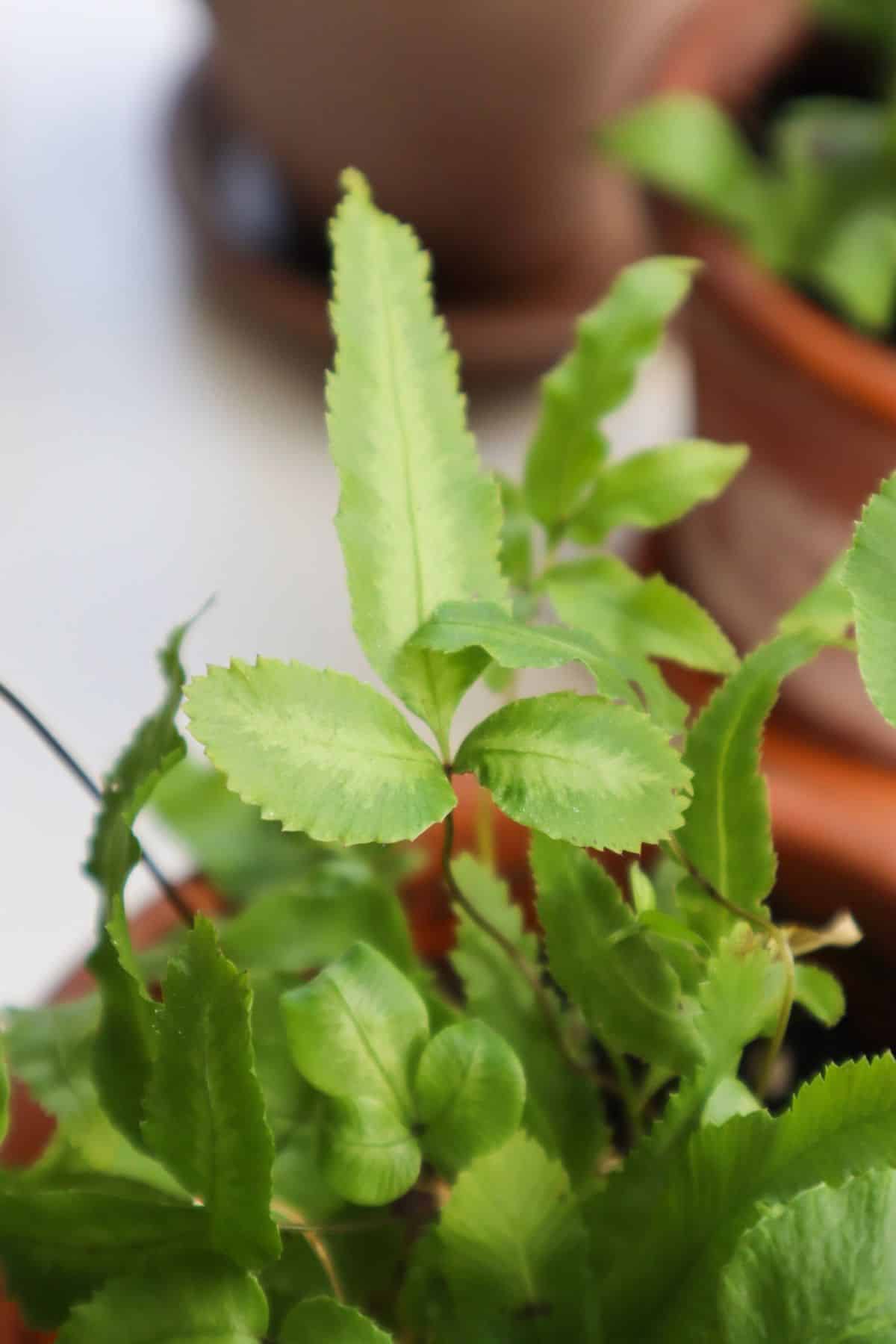
Watering
The Silver Ribbon Fern is a typical fern and needs consistent, even moisture to thrive.
This is the main thing to watch for – the Achilles heel – if you like. Unfortunately, it has very little drought tolerance and will quickly suffer if planted in a dry substrate.
It will need topping up with water regularly, so as a houseplant, make sure it’s in a pot with good drainage so you can water it freely without risking root rot.
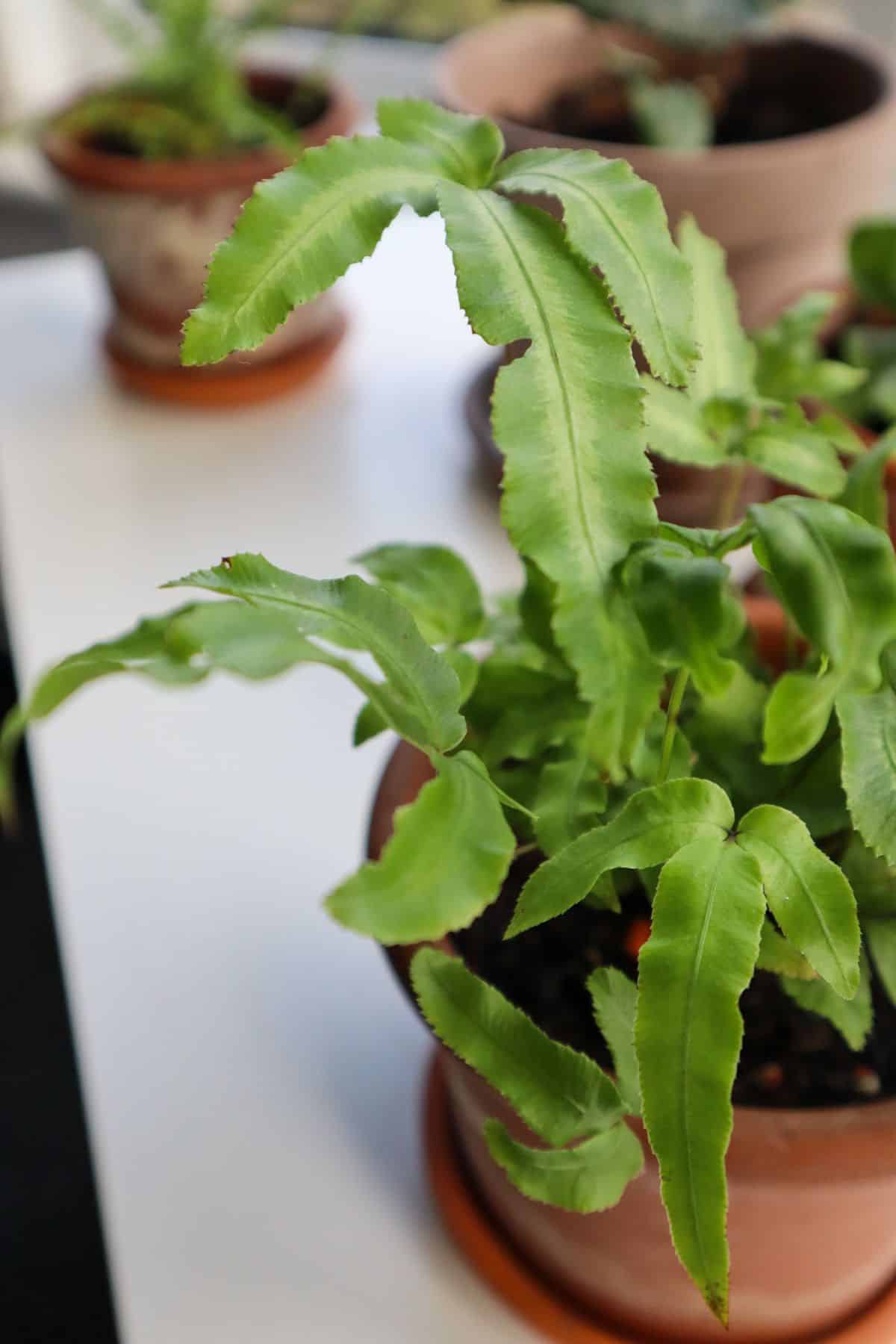
If you’re popping yours in a terrarium build, pair it with other moisture-loving ferns and mosses.
Substrate
As seen by its widespread natural cultivation, Pteris cretica is capable of growing in a variety of soil conditions.
So, if you’re keeping your plant as a houseplant, I wouldn’t worry too much about specifics.
It will grow well in any typical tropical or fern substrate that provides adequate water retention and drainage.
👉 If in doubt, our tropical substrate mix is a well-balanced option for terrariums and pots alike.
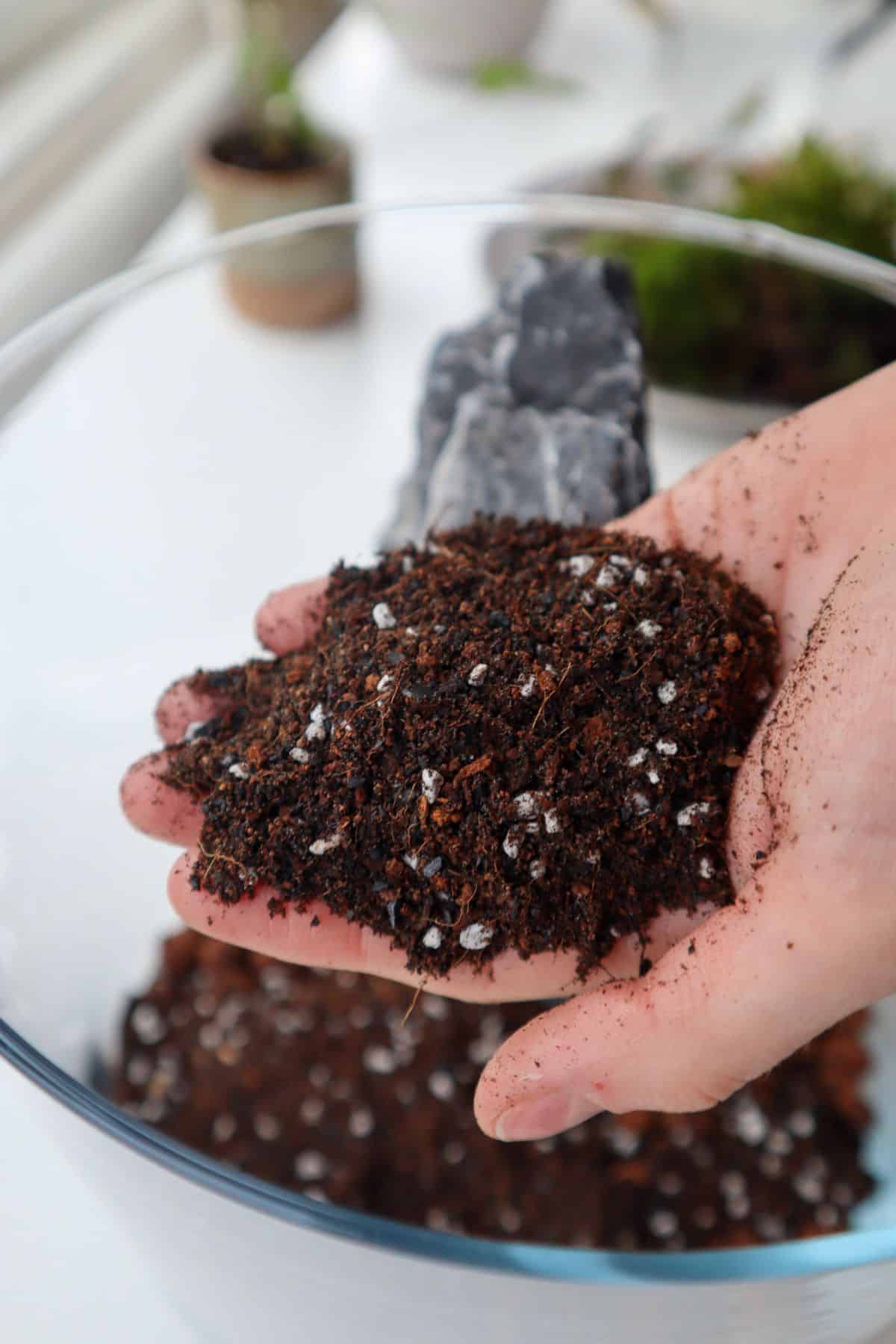
Temperature & Humidity
As you’d expect to see with a plant that thrives across Africa, Asia, and Europe, the Cretan Bake Fern is a fairly hardy plant and can tolerate lower temperatures.
Even Crete itself can get nippy in the winter months!
That being said, warmer temperatures will definitely be appreciated, and it’ll be far less forgiving on the humidity front.
I’d aim for a bare minimum of 50% humidity, but ideally higher.
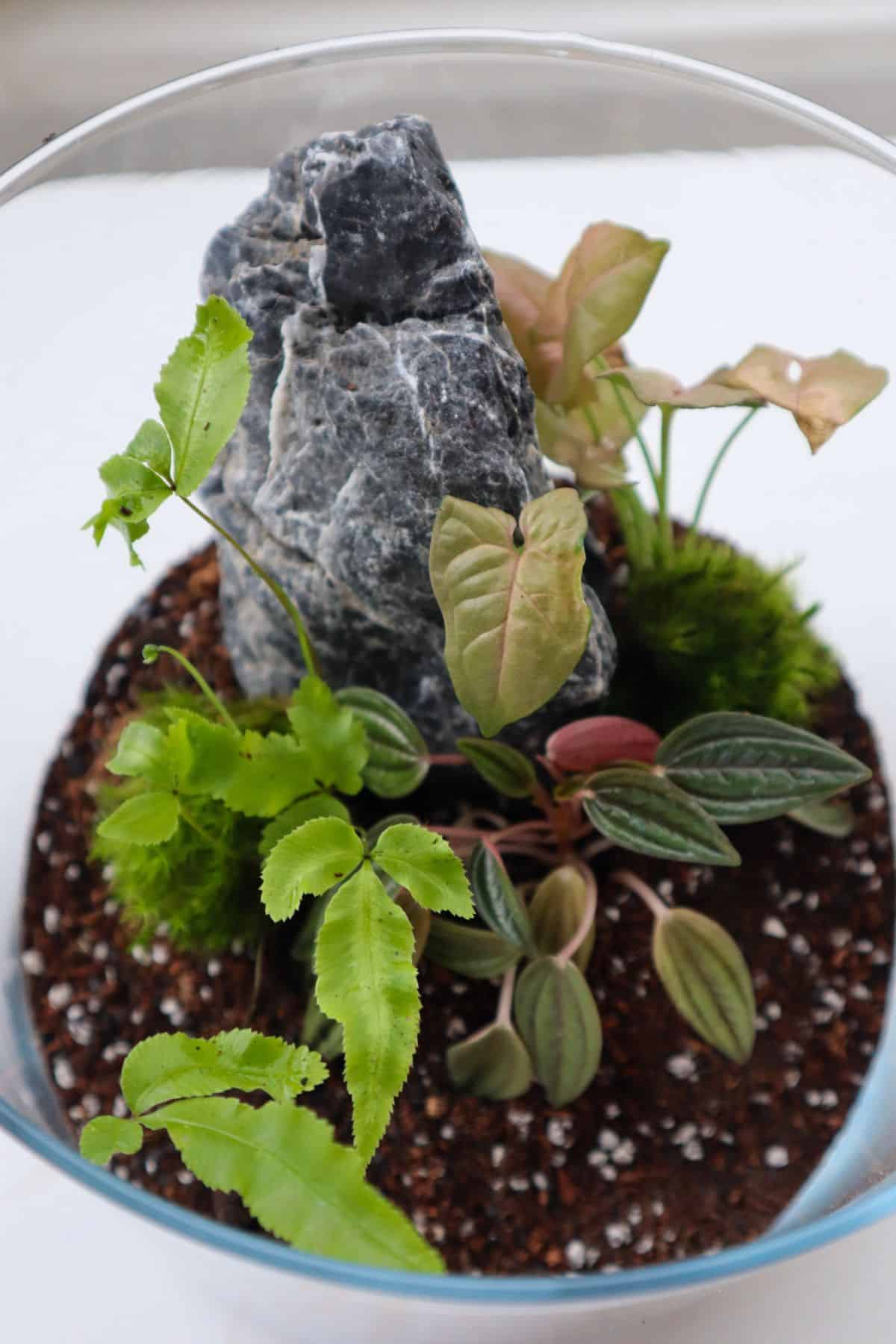
Growth
Mature Silver Ribbon Ferns can get fairly large (up to around 20 inches), but it won’t get there in a rush.
Pteris cretica grows at a pretty average speed, taking several years to reach full maturity.
New fronds develop from the base. Each frond grows longer and taller over older fronds, giving the plant a sharp sense of volume.
If it ever gets too big for your liking, you can snip the taller fronds off or divide it.
So let’s take a look at that…
Propagation
Propagating Pteris cretica is easily done through division, which is helpful if you need a smaller section of plant for a terrarium build.
Grab your plant, ease it out of the pot, then tease the fronds and roots into two with your fingers.
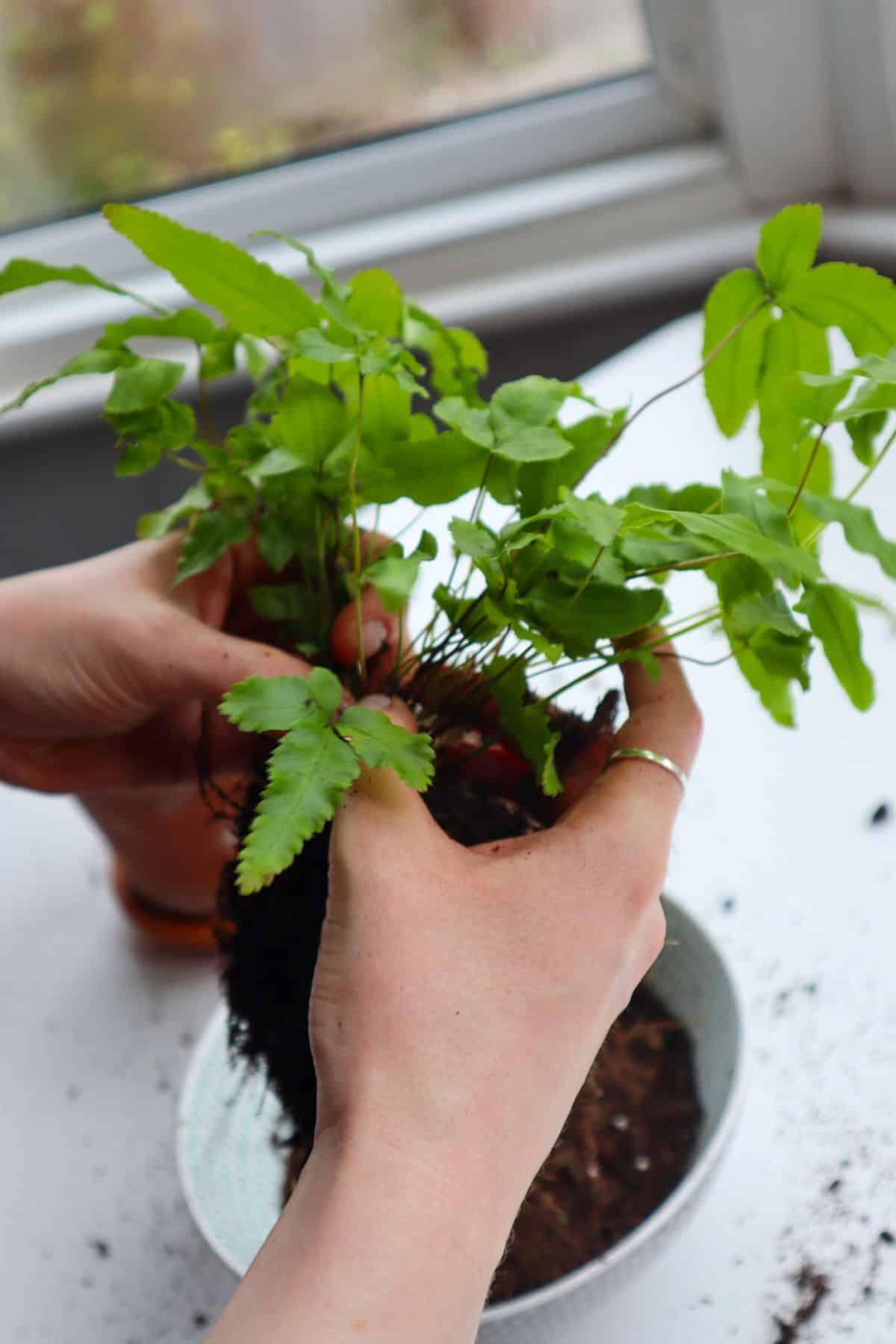
If the roots are too dense or the rhizome too tough, and you can’t get through, grab the scissors and snip through it.
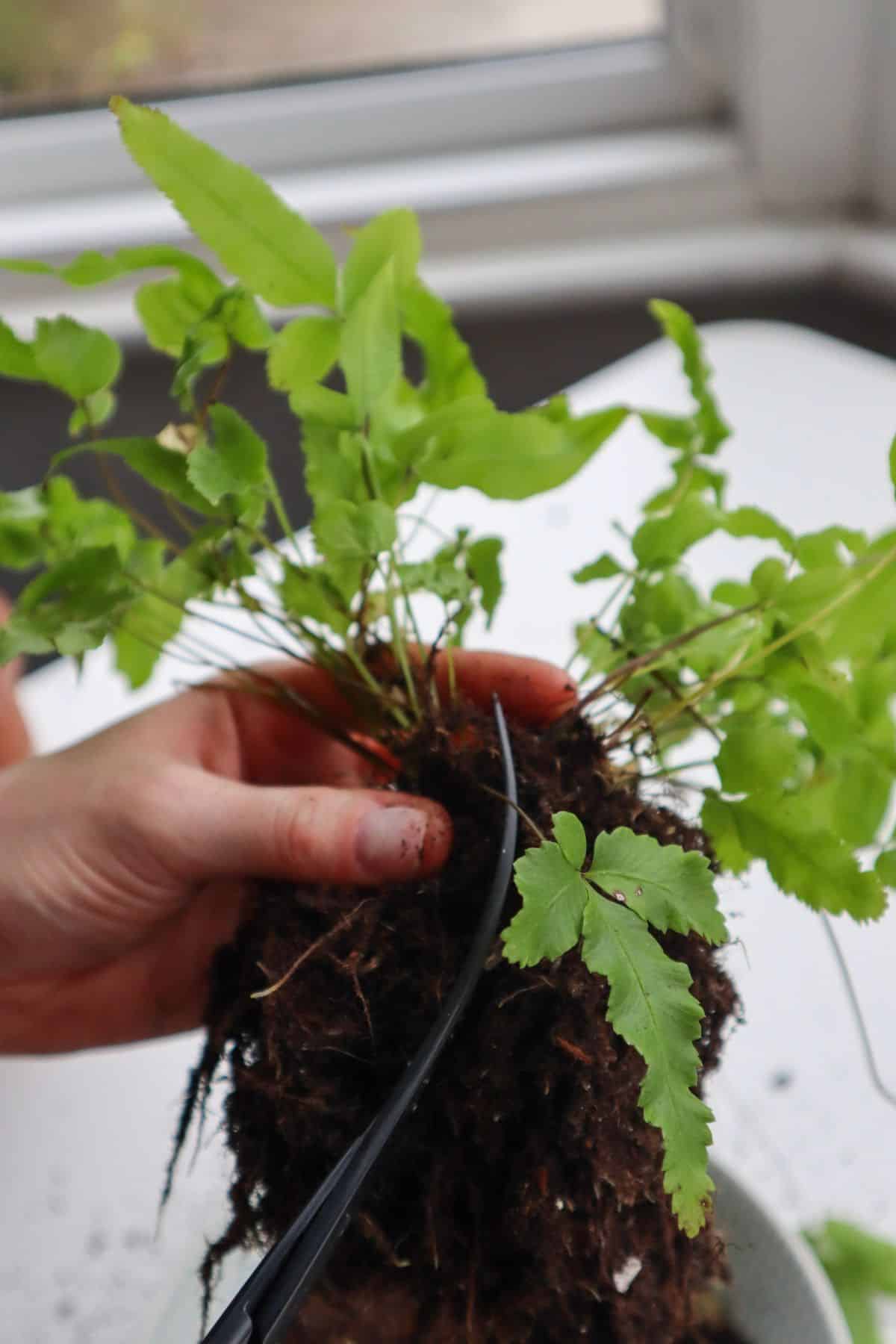
Allow at least a few fronds on each rhizome section to give new plants the best chance of thriving.
Varieties & Similar Plants
The Pteris genus contains a huge variety of tropical ferns with plenty of different characteristics.
When I say huge, I mean it; we’re taking around 300 species of Brake Ferns!
That’s completely unhelpful, I know, so a nice place to start if you want something similar is the Silver Lace Fern, Pteris ensiformis.
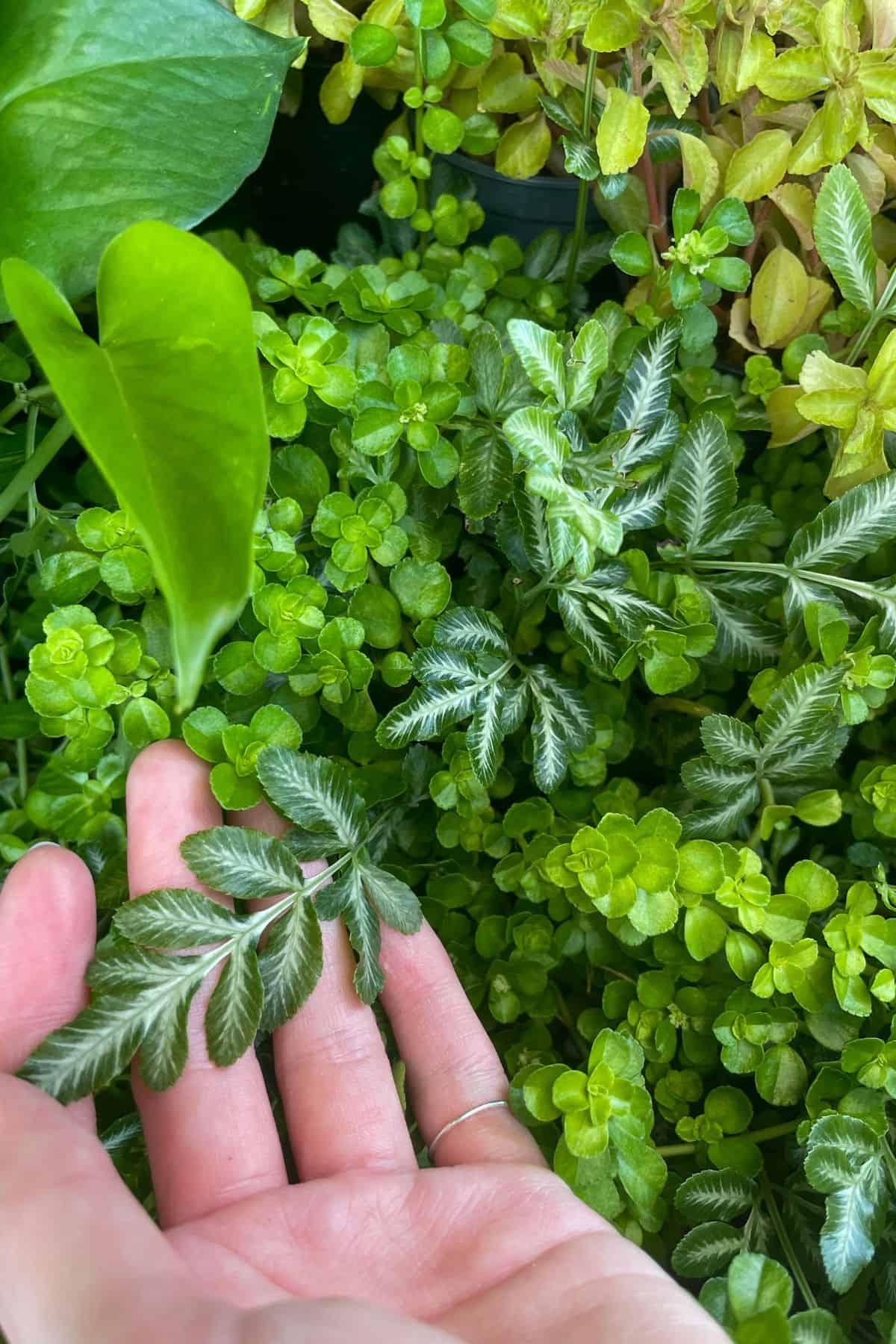
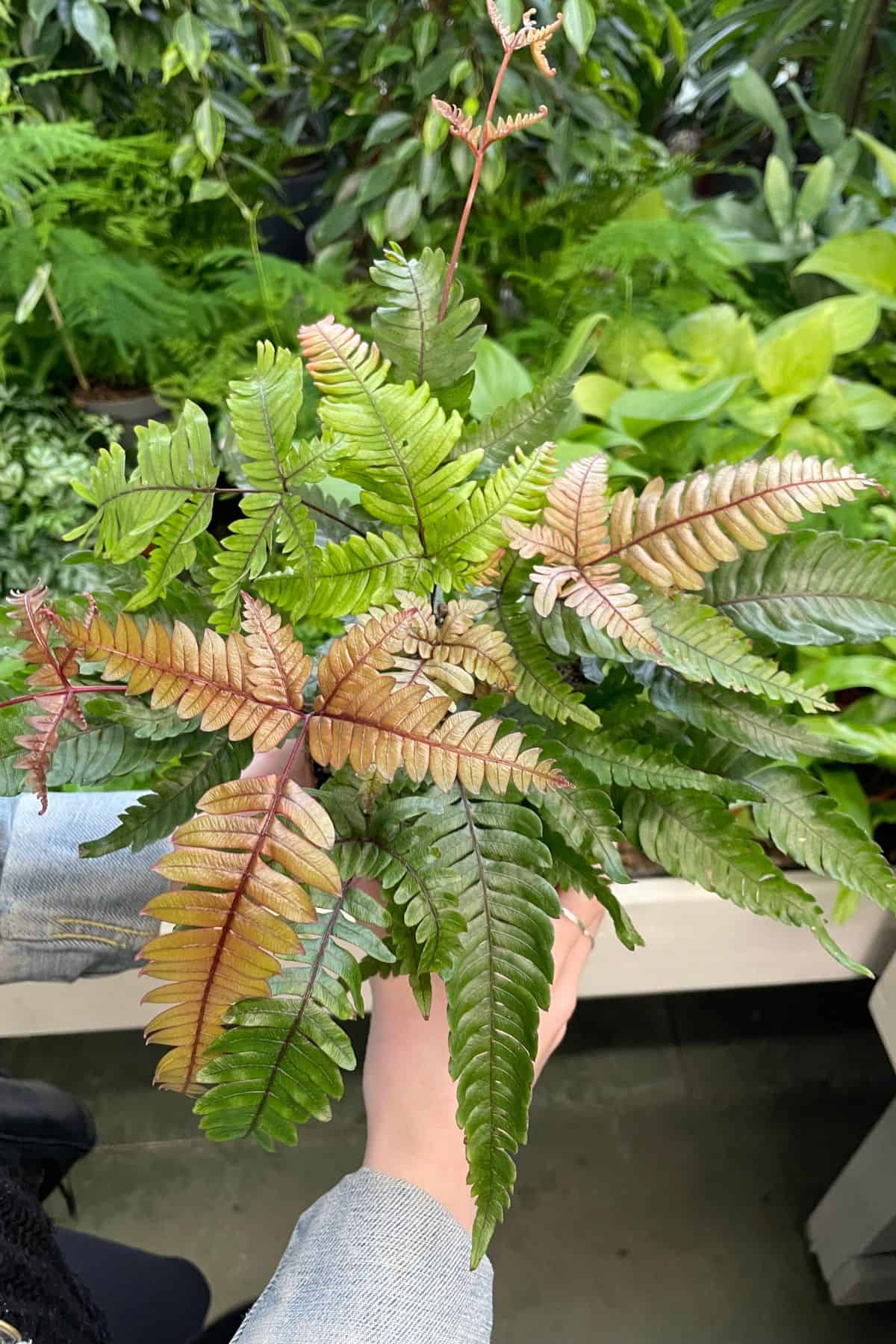
Pteris cretica itself only has two common varieties, the ‘Albolineata’ as we’ve covered today, and the ‘Mayii,’ which is somewhat similar but has a further forked terminal leaf. It’s relatively uncommon to find, and honestly, it looks a bit weird for my taste.
Toxicity
Pteris cretica isn’t known to be toxic to humans and pets, but it’s not edible either and could cause irritation or other unwanted symptoms when ingested. If you have little paws or hands around your home, a terrarium is a great way of keeping this plant out of the way.
